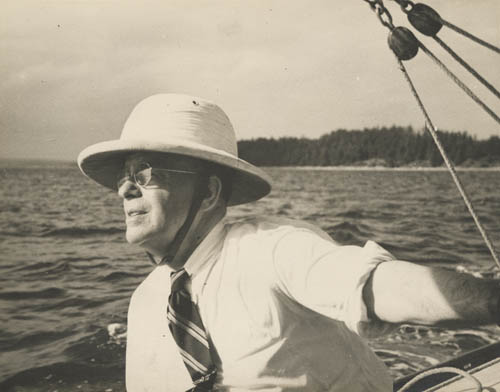A Halifax Childhood, 1879–1895
William Roué was born in Halifax, Nova Scotia, on April 27, 1879. He grew up in the city’s south end, close to its bustling harbour.
From a young age, he was fascinated by boats, building models to test his designs. As an enthusiast of boats and their design, Roué was also drawn to the Royal Nova Scotia Yacht Squadron. He frequented its boatyard and clubhouse, and crewed on members’ boats while still a teenager.
